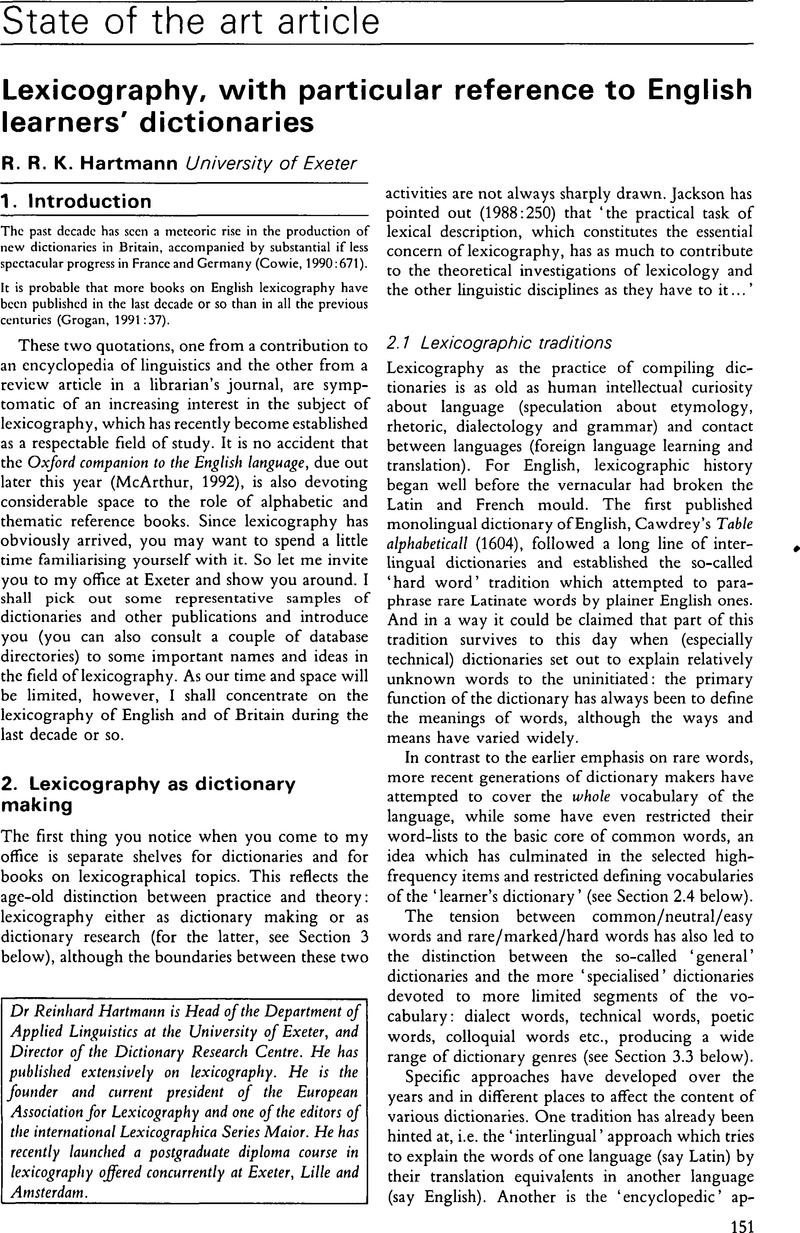Crossref Citations
This article has been cited by the following publications. This list is generated based on data provided by Crossref.
Jaszczolt, Katarzyna M.
1995.
Handbook of Pragmatics.
p.
561.
Jaszczolt, Katarzyna
1995.
Typology of contrastive studies: specialisation, progress and applications.
Language Teaching,
Vol. 28,
Issue. 1,
p.
1.
Li, Rui
and
Hansen, Annette Skovsted
2018.
A remarkable compilation shift.
Historiographia Linguistica,
Vol. 45,
Issue. 3,
p.
263.
Bueno, Rejane
and
Durão, Adja Balbino de Amorim Barbieri
2019.
Reflexiones preliminares acerca del tratamiento de la equivalencia verbal en un diccionario (semi)bilingüe para el aprendizaje de la lengua española.
Domínios de Lingu@gem,
Vol. 12,
Issue. 4,
p.
2264.
Jaszczolt, Katarzyna M.
2022.
Handbook of Pragmatics.
p.
1499.
Li, Rui
2022.
From Mandarin to Cantonese Lexicography.
Historiographia Linguistica,
Vol. 49,
Issue. 2-3,
p.
235.
Leban, Ksenija
2025.
A Survey of Internationalisms between Slovene and English.
Slovene Linguistic Studies,
Vol. 3,
Issue. ,
p.
42.


